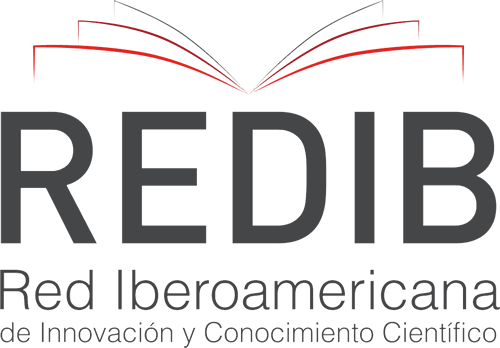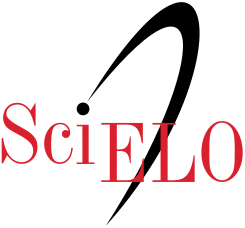Develando las razones del diálogo asimétrico: Explorando la exclusión en el campo de la comunicación
DOI:
https://doi.org/10.32870/cys.v2023.8719Palabras clave:
América Latina, Sur Global, Campo de la comunicación, Críticas, Inclusión, ExclusiónResumen
Los procesos de exclusión al interior del campo de la comunicación por razones de género, raza, lengua y, sobre todo, contextos geográficos han sido una constante. Diversos estudios empíricos ratifican la marginal contribución de América Latina de un 1% a la producción central del campo en las revistas de más alta indexación. Este artículo presenta una reflexión para comprender la lógica de la exclusión que ha propiciado esta marginal participación, a pesar de los aportes valiosos efectuados en el continente. El artículo concluye con una invitación a apostarle a una agenda de investigación plural, amplia e inclusiva.Descargas
Citas
Albuquerque, A. (2020). Structural Limits to the De-Westernization of the Communication Field: The Editorial Board in Clarivate's jcr System. Communication, Culture & Critique, 13(2), 185-203. https://doi.org/10.1093/ccc/tcaa015
Arroyave, J. (2007). The emergence of diffusion theory in Latin America: A retrospect Analysis. Investigación y Desarrollo, 15(2), 260-287.
Arroyave, J. (2020). Journalism. En W. Raussert, G. L. Anatol, S. Thies, S. Corona Berkin & J. C. Lozano (Eds.), The Routledge Handbook to the Culture and Media of the Americas (pp. 353-363). Routledge.
Arroyave, J. & González-Pardo, R. (2021). Investigación bibliométrica de comunicación en revistas científicas en América Latina (2009-2018). Comunicar XXX, 70(1). https://doi.org/10.3916/C70-2022-07
Blumler, J. G. & Gurevitch, M. (1995). The crisis of public communication. Routledge. http://dx.doi.org/10.4324/9780203181775
Brun Jensen, K., Craig, R. T., Pooley, J. D. & Rothenbuhler, E. (Eds.). (2016). The international encyclopedia of communication theory and philosophy. Wiley.
Bryant, J. & Miron, D. (2004). Theory and research in mass communication. Journal of Communication, 54(4), 662-704. https://doi.org/10.1093/joc/54.4.662
Caplar, N., Tacchella, S. & Birrer, S. (2017). Quantitative evaluation of gender bias in astronomical publications from citation counts. Nature Astronomy, 1, 1-5. https://doi.org/10.1038/s41550-017-0141
Chakravartty, P., Kuo, R., Grubbs, V. & McIlwain, C. (2018). #CommunicationSoWhite. Journal of Communication, 68(2), 254-266 https://doi.org/10.1093/joc/jqy003
Curtis, J. W. & Thornton, S. (2014). The annual report on the economic status of the profession, 2013-14. Academe, 5.
Demeter, M. (2018). The winner takes it all: International inequality in communication and media studies today. Journalism and Mass Communication Quarterly, 96(1), 37-59. https://doi.org/10.1177/1077699018792270
Ferber, M. A. & Brün, M. (2011). The gender gap in citations: Does it persist? Feminist Economics, 17(1), 151-158.
Freelon, D., Pruden, M. L., Eddy, K. & Kuo, R. (2023). Inequalities on race, place, and gender among the communication citation elite , 2000-2019. Journal of Communication, 73, 356-367. https://doi.org/10.1093/joc/jqad002
Fuentes Navarro, R. (2020). Institutionalization and Internationalization of the field of communication studies in Mexico and Latin America. En P. Simonson & D. W. Park (Eds), The international history of communication study. Routledge.
Fuentes Navarro, R. (2010). Medio siglo del estudio universitario de la comunicación en México: El riesgo del inmediatismo superficial. Editorial iteso.
Griffin, D. J., Arth, Z. W., Bolkkan, S., Gilbreath, J. N., Pike, M. & Hakim, S. D. (2023). Scholarly productivity in communication studies: a five-years review (2017-2021). Communication Education, 72(1), 1-18. https://doi.org/10.1080/03634523.2022.2160473
Hanitzsch, T. (2019). Journalism studies still needs to fix Western bias. Journalism, 20(1), 214-217. https://doi.org/10.1177/1464884918807353
Hofstra, B., Kulkarni, V. V., Galvez, S. M. N., He, B., Jurafsky, D. & McFarland, D. A. (2020). The diversity–innovation paradox in science. Proceedings of the National Academy of Sciences, 117(17), 9284-9291. https://doi.org/10.1073/pnas.1915378117
Knobloch-Westerwick, S. & Glynn, C. J. (2013). The Matilda effect—role congruity effects on scholarly communication: A citation analysis of Communication Research and Journal of Communication articles. Communication Research, 40(1), 3-26. https://doi.org/10.1177/0093650211418339
Marques de Melo, J. (1988). Communication theory and research in Latin America: a preliminary balance of the past twenty-five years. Media, culture and society, 10, 405-418. https://doi.org/10.1177/016344388010004002
Mattelart, A. & Mattelart, M. (1997). Historia de las teorías de la comunicación. Paidós.
Mayer, V., Press, A., Verhoeven, D. & Sterne, J. (2018). How do we intervene in the stubborn persistence of patriarchy in communication scholarship? En D. T. Scott & A. Shaw (Eds.), Interventions: Communication theory and practice (pp. 53- 82). Peter Lang Publishing, Inc.
Mosbah-Natanson, S. & Gingras, Y. (2013). The globalization of social sciences? Evidence from a quantitative analysis of 30 years of production, collaboration and citations in the social sciences (1980-2009). Current Sociology, 62(5), 1-20. https://doi.org/10.1177/0011392113498866
Miller, T. & Arroyave, J. (2021). World media studies/Worlding media studies. En J. R. Di Leo & C. Moraru (Eds.), The Bloomsbury Handbook of World Theory. Bloomsbury Academic.
Monroe, K., Ozyurt, S., Wrigley, T. & Alexander, A. (2008). Gender equality in academia: Bad news from the trenches, and some possible solutions. Perspectives on Politics, 6(2), 215-233. https://doi.org/10.1017/S1537592708080572
Nielsen, D. (2011). Functionalism/neo-functionalism. The Blackwell Encyclopedia of Sociology (pp. 239-240).
Oliveira Paulino, F., Kaplún, G., Mariño, M. V. & Custodio, L. (2020). Tradiciones de Investigación en Diálogo - Estudios sobre Comunicación en América Latina y Europa. Media XXI.
Orozco Gómez, G. (1997). La investigación en comunicación dentro y fuera de América Latina: Tendencias, perspectivas y desafíos del estudio de los medios. Universidad de la Plata.
Pasquali, A. (1977). Comunicación y cultura de masas (4ta ed.). Monte Ávila.
Potter, J. W. (2014). Patterns in the Use of Theory In Media Effects Research. En S. Robert, P. Fortner & M. Fackler (Eds.), The Handbook of Media and Mass Communication Theory (95-114). John Wiley & Sons, Inc.
Rogers, E. M. (1997). History of communication study: A biographical approach. Free Press.
Rogers, E. M. & Chaffee, S. H. (1994). Communication and journalism from Daddy Bleyer to Wilbur Schramm. Journalism Monograph, 148, 1-50.
Salvador-Mata, B., Cortinas-Rovira, S. & Herrero-Solana, V. (2023). Research into journalism in Spain: Sizable, but neither international nor impactful. Journalism, 1-21. https://doi.org/10.1177/14648849231207674
Schramm, W. (1963). The Science of Human Communication: New Directions and New Findings in Communication Research. Basic Books.
Simpson, C. (1994). Science of coercion: Communication research and psychological warfare, 1945- 1960. Oxford University Press.
Simonson, P., Park. D. W. & Pooley, J. (2022). Exclusiones/Exclusions: El papel de la historia en saldar la deuda histórica del campo. History of Media Studies, 2. https://doi.org/10.32376/d895a0ea.cb32b735
Schwarz, C. & Jaramillo, O. (1986). Hispanic critical communication research in its historical context. En R. Atwood & E. G. McAnany (Eds.), Communication and Latin American Society: Trends in critical research 1960-1985. The University of Wisconsin Press.
Teich, E. G., Kim, J. Z., Lynn, C. W., Simon, S. C., Klishin, A. A., Srivastava, P., Bassett, L. C., Zurn, P., Dworkin, J. D. & Bassett, D. S. (2022). Citation inequity and gendered citation practices in contemporary physics. Nature Physics, 18, 1161-1170 (2022). https://doi.org/10.1038/s41567-022-01770-1
Torrico, E. (2016). La comunicación pensada desde América Latina (1960-2009). Comunicación Social: Ediciones y Publicaciones.
Waisbord, S. (2016). Communication studies without frontiers? Translation and cosmopolitanism across academic cultures. International Journal of Communication, 10(2016), 868-886
Waisbord, S. & Mellado, C. (2014). De-westernizing communication studies: A reassessment. Communication Theory, 24(4), 361-372. https://doi.org/10.1111/comt.12044
Walter, N., Cody, M. J. & Ball-Rokeach, S. J. (2018). The Ebb and Flow of Communication Research: Seven Decades of Publication Trends and Research Priorities. Journal of Communication, 68(2), 424-440. https://doi.org/10.1093/joc/jqx015
Wang, X., Dworkin, J. D., Zhou, D., Stiso, J., Falk, E. B., Bassett, D. S., Zurn, P. & Lydon-Staley, D. M. (2021). Gendered citation practices in the field of communication. Annals of the International Communication Association, 45(2), 134-153. https://doi.org/10.1080/23808985.2021.1960180
Descargas
Publicado
Cómo citar
Número
Sección
Licencia

Esta obra está bajo una licencia internacional Creative Commons Atribución-NoComercial 4.0.
Los autores/as que publiquen en esta revista aceptan las siguientes condiciones:
De acuerdo con la legislación de derechos de autor, los autores conservan los derechos de autoría y otorgan a Comunicación y Sociedad el derecho de primera comunicación pública de la obra. Comunicación y Sociedad no realiza cargos a los autores por enviar y procesar artículos para su publicación.
Los autores/as pueden realizar otros acuerdos contractuales independientes y adicionales para la distribución no exclusiva de la versión del artículo publicado en Comunicación y Sociedad (por ejemplo incluirlo en un repositorio institucional o publicarlo en un libro) siempre que indiquen claramente que el trabajo se publicó por primera vez en Comunicación y Sociedad.











